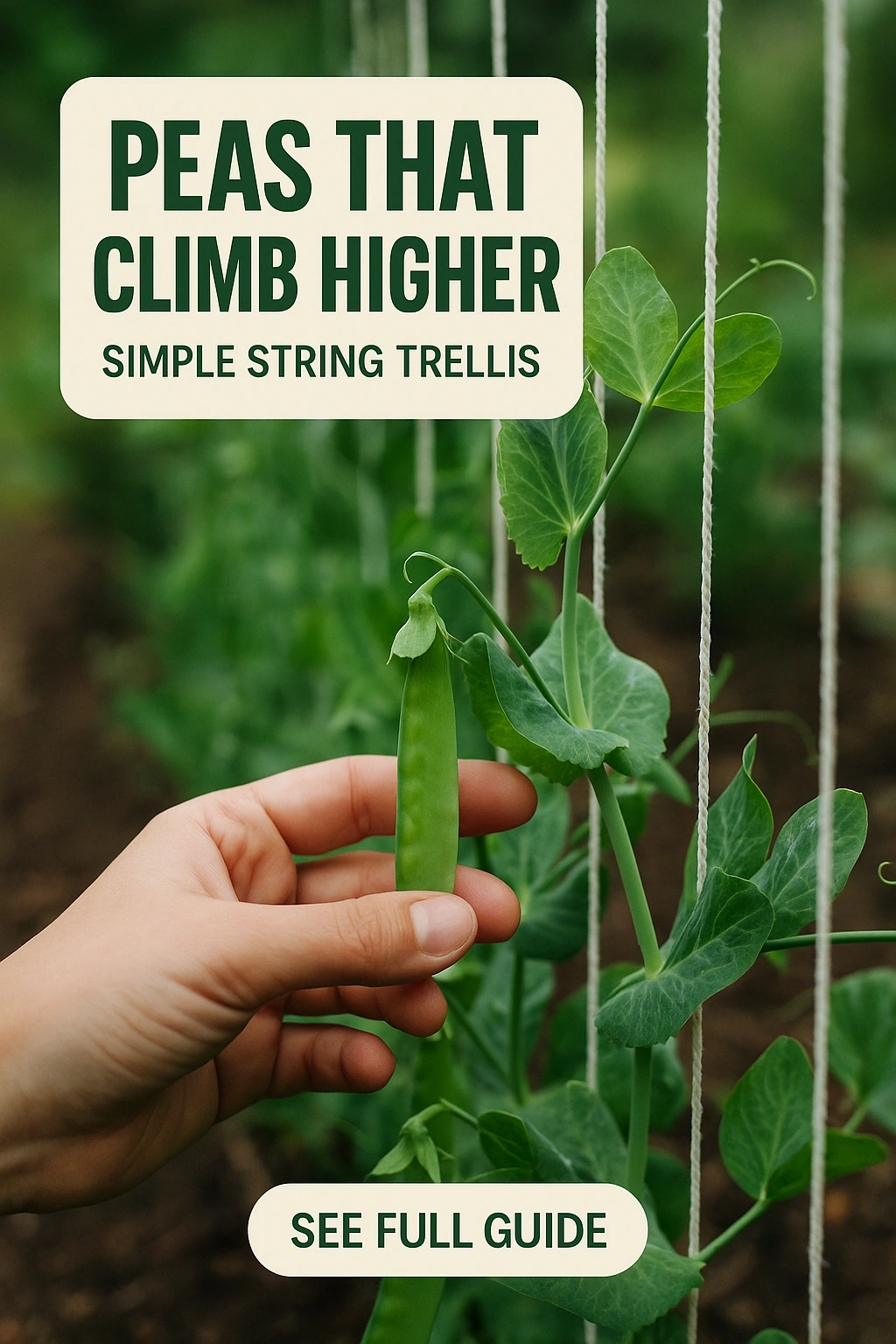
Discover the secret to growing lush, productive pea plants by utilizing a simple string trellis system. This innovative gardening technique not only enhances your garden’s aesthetics but also maximizes your harvest. Learn how to implement this effective method and enjoy the benefits of climbing peas that thrive with minimal effort.
Understanding Pea Plants and Their Growth Habits
Peas are a popular cool-season crop that can flourish in various garden settings. They are known for their climbing behavior, which allows them to reach greater heights and optimize sunlight exposure. Understanding the growth habits of pea plants is essential for successful cultivation, particularly when using a trellis system. Most pea varieties are classified as either bush or climbing types, with climbing peas growing taller and requiring support for optimal growth.
The Benefits of Using a String Trellis for Peas
Implementing a string trellis for climbing peas offers several advantages that can enhance your gardening experience. Not only does it support the plants, but it also promotes healthier growth and easier maintenance.
Improved Air Circulation and Sunlight Exposure
Climbing peas benefit from improved air circulation and greater access to sunlight when grown on a trellis. This exposure reduces the risk of fungal diseases and helps the plants produce more flowers and pods. A vertical growing system allows you to maximize space, making it ideal for small gardens or containers.
Ease of Harvesting
Using a string trellis simplifies the harvesting process, as the pea pods are elevated and easily accessible. This reduces the strain on your back and knees, making it a more enjoyable task. Additionally, being able to see the pods clearly helps you identify when they are ripe for picking.
Building a Simple String Trellis for Peas
Creating a simple string trellis for your climbing peas is an easy DIY project. With minimal materials and tools, you can construct a functional support system that will encourage your plants to climb and thrive.
Materials Needed
- Vertical Support: Wooden stakes, PVC pipes, or metal rods
- String or Twine: Durable garden twine or natural fiber string
- Tools: Hammer or mallet (if using stakes), scissors, and optional wire cutters
Step-by-Step Instructions
Follow these steps to build your string trellis:
- Install Vertical Supports: Drive the stakes or pipes into the ground, spacing them 4 to 5 feet apart.
- Attach the String: Tie the string at the top of each support, creating a horizontal line. Then, run vertical strings down to the ground, spacing them about 6 inches apart.
- Secure the String: Tie the string to the ground or weigh it down with small rocks to ensure stability.
- Plant Your Peas: Sow your pea seeds at the base of the trellis, following the recommended planting depth for your specific variety.
Care and Maintenance of Climbing Peas on a Trellis
Once your climbing peas are established, proper care is essential for a bountiful harvest. Regular maintenance will ensure that your plants remain healthy and productive.
Watering and Fertilizing
Peas require consistent moisture, especially during flowering and pod development. Water your plants deeply and regularly, ensuring the soil remains moist but not soggy. Fertilization is generally not necessary for peas, as they can fix their nitrogen, but a light application of a balanced organic fertilizer can support growth in poor soils.
Pest and Disease Management
Keep an eye out for common pests such as aphids and pea weevils. Handpicking or using insecticidal soap can control infestations. Additionally, monitor for signs of disease, including powdery mildew or root rot, and ensure good air circulation by avoiding overcrowding.
Harvesting Your Peas
Knowing when to harvest your peas is crucial for maximizing flavor and quality. Peas are typically ready for harvest when the pods are firm and fully developed but still tender.
Harvesting Techniques
To harvest, gently grasp the pod and pull it off the vine. Avoid yanking, as this can damage the plant. Harvest regularly to encourage continued production and prevent overripening, which can lead to tough and starchy peas.
Frequently Asked Questions (FAQs)
What types of peas are best for a string trellis?
Climbing pea varieties, such as Sweet Snap or Tall Sugar Snap peas, are ideal for a string trellis due to their natural climbing capabilities and vigorous growth.
How tall should the trellis be for climbing peas?
A trellis for climbing peas should ideally be between 4 to 6 feet tall. This height allows the plants to climb effectively while remaining manageable for harvesting.
Can I use a string trellis for other plants?
Yes, a string trellis can be used for various climbing plants, including beans, cucumbers, and tomatoes, making it a versatile addition to your garden.
How often should I water my climbing peas?
Climbing peas require consistent watering, especially during flowering and pod development. Water them deeply once a week, adjusting based on rainfall and soil moisture levels.
What should I do if my pea plants are not climbing?
If your pea plants are not climbing, ensure they have adequate support and that the strings are securely attached. You may need to gently guide the plants toward the trellis until they find their way.
